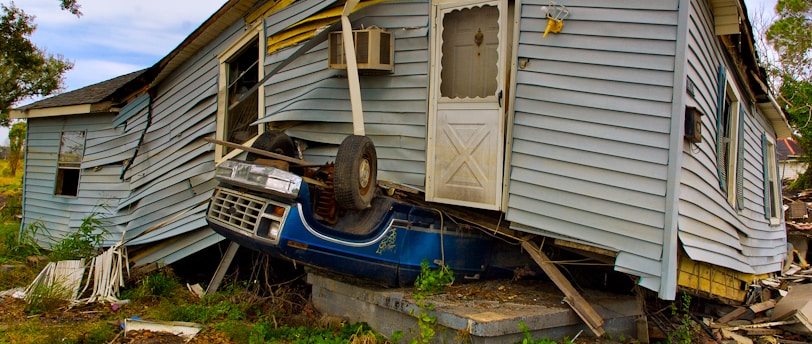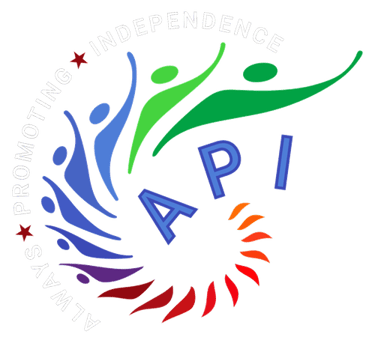Email: api@api-llc.com Phone: 727-545-1273
Understanding Medicare During Natural Disasters
When disaster strikes, access to health care shouldn’t be another worry. Medicare supports beneficiaries during natural disasters, covering emergency waivers, telehealth access, prescription refills, and additional benefits. Learn how to stay prepared, protect your coverage, and make the most of Medicare’s disaster response tools.
6/26/20253 min read


Introduction to Medicare and Natural Disasters
When a natural disaster strikes—whether it’s a hurricane, wildfire, flood, or tornado—accessing health care can become challenging for Medicare beneficiaries. Fortunately, Medicare has built-in flexibilities and emergency provisions designed to maintain continuity of care. Below is an overview of how Medicare operates during federally declared disasters, along with practical tips for both beneficiaries and providers.
Declaration of Emergency & Waiver Authority
Federal and State Declarations
A disaster declaration typically follows a state governor’s request to the President under the Stafford Act, or a public health emergency declared by HHS under Section 319 of the Public Health Service Act. These declarations trigger Medicare emergency provisions at medicaid.gov.Section 1135 Waivers
Under Section 1135 of the Social Security Act, the HHS Secretary may temporarily waive or modify specific Medicare requirements to ensure adequate access to care in affected areas, cms.govmedicaid.gov. Waivers typically remain in effect until the end of the emergency period or 60 days from the date of issuance and may be extended by the Secretary.
Blanket vs. Individual Waivers
Blanket Waivers
CMS often issues nationwide “blanket” Section 1135 waivers during widespread emergencies—beneficiaries and providers need no individual requests. Blanket waivers can include waiving home health face-to-face encounter requirements or extending prior authorization deadlines, as noted on medicaid.gov.Individual Waiver Requests
If no blanket waiver exists, providers can request an individual Section 1135 waiver through the CMS PHE Emergency Web Portal cmsqualitysupport.servicenowservices.com.
Telehealth Flexibilities
Expanded Telehealth Coverage
During disasters, Medicare lifts geographic and originating-site restrictions, allowing beneficiaries to receive telehealth services from home, even in areas outside of rural areas. These flexibilities, extended through September 30, 2025, cover both medical and behavioral health visits, including audio-only sessions where clinically appropriate. For more information, visit telehealth.hhs.gov or kiplinger.com.Beneficiary Cost Sharing
Cost-sharing rules (e.g., deductibles, coinsurance) remain unchanged unless waived under Section 1135 of the Act.
Coverage for Displaced Beneficiaries
Out-of-State Care
If you must evacuate out of your Home State, Original Medicare still covers medically necessary services furnished by any Medicare-participating provider nationwide. Always present your red, white, and blue Medicare card.Medicare Advantage Plans
MA plans are also required to cover emergency and urgently needed services anywhere in the U.S. However, for routine care, you may need to return to your plan’s service area or seek out-of-network coverage under specific rules.
Durable Medical Equipment (DME) & Supplies
Replacements and Expedited Repairs
Section 1135 waivers can speed up authorization for DME repairs or replacements if damage occurs during the disaster period, cms.gov.Home Health Face-to-Face Requirements
Waived for homebound certifications, enabling uninterrupted home health care delivery.
Pharmacy & Part D Rules
Early Refills
Many Part D plans implement temporary policies to allow early or emergency refills when beneficiaries lose access to their regular pharmacy due to a temporary situation. Contact your plan or 1-800-MEDICARE for guidance.Accessing Medications
If you are displaced, you can transfer your prescriptions to another in-network pharmacy. In emergencies, some pharmacies will fill essential prescriptions even if they are not part of a network. Pharmacy & Part D RulesEarly Refills
Many Part D plans implement temporary policies to allow early or emergency refills when beneficiaries lose access to their regular pharmacy due to a temporary situation. Contact your plan or 1-800-MEDICARE for guidance.Accessing Medications
If you are displaced, you can transfer your prescriptions to another in-network pharmacy. In emergencies, some pharmacies will fill essential prescriptions even if out-of-network.
Provider Enrollment & Billing Guidance
Enrollment Flexibilities
Section 1812(f) waivers can expedite enrollment for providers in disaster-stricken areas, ensuring they can bill Medicare immediately, cms.gov.Billing Codes
Use standard CPT/HCPCS codes; no special disaster codes are required. For telehealth, append modifier 95 for synchronous services.
Practical Tips for Beneficiaries
Keep Your Medicare Card Handy
Photograph both sides and store digitally.Document Your Needs
Carry a summary of chronic conditions and medications.Call 1-800-MEDICARE
For real-time updates on impacted areas, waivers in effect, and plan-specific flexibilities.Stay Informed
Monitor FEMA, state emergency management, and CMS disaster pages for the latest policy changes.
Conclusion
Medicare’s emergency provisions—Section 1135 waivers, expanded telehealth services, and flexible enrollment—are designed to minimize disruptions to care during natural disasters. By understanding these flexibilities, beneficiaries can better navigate the system, and providers can ensure that services are uninterrupted for vulnerable populations. Stay prepared, stay informed, and remember that help is just a phone call or web lookup away.
This blog is intended for informational purposes and does not replace the guidance provided by Medicare or emergency management authorities.
Helping individuals make their own decisions about where they live, work, and how they spend their time
Contact Us!
5030 78th Ave N
Suite 11
Pinellas Park, FL 33781
(727) 545-1273
© 2025. All rights reserved.
